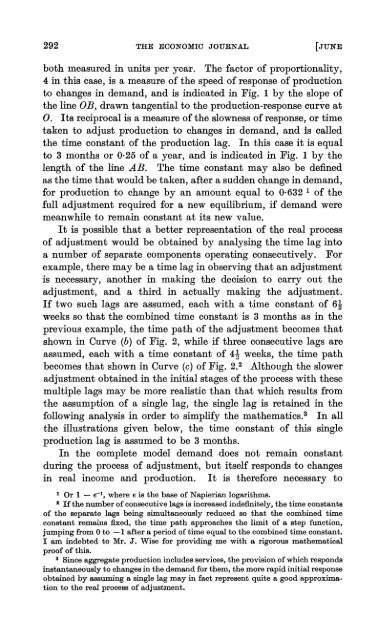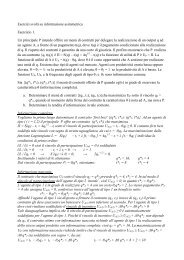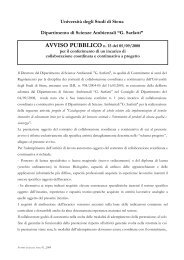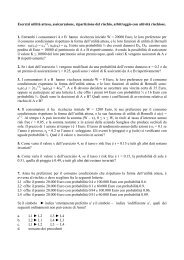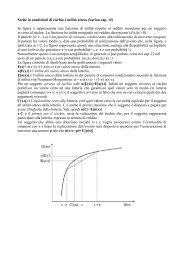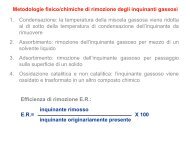Stabilisation Policy in a Closed Economy Author(s): A. W. Phillips ...
Stabilisation Policy in a Closed Economy Author(s): A. W. Phillips ...
Stabilisation Policy in a Closed Economy Author(s): A. W. Phillips ...
Create successful ePaper yourself
Turn your PDF publications into a flip-book with our unique Google optimized e-Paper software.
292 THE ECONOMIC JOURNAL [JUNE<br />
both measured <strong>in</strong> units per year. The factor of proportionality,<br />
4 <strong>in</strong> this case, is a measure of the speed of response of production<br />
to changes <strong>in</strong> demand, and is <strong>in</strong>dicated <strong>in</strong> Fig. 1 by the slope of<br />
the l<strong>in</strong>e OB, drawn tangential to the production-response curve at<br />
0. Its reciprocal is a measure of the slowness of response, or time<br />
taken to adjust production to changes <strong>in</strong> demand, and is called<br />
the time constant of the production lag. In this case it is equal<br />
to 3 months or 025 of a year, and is <strong>in</strong>dicated <strong>in</strong> Fig. 1 by the<br />
length of the l<strong>in</strong>e AB. The time constant may also be def<strong>in</strong>ed<br />
as the time that would be taken, after a sudden change <strong>in</strong> demand,<br />
for production to change by an amount equal to 0632 1 of the<br />
full adjustment required for a new equilibrium, if demand were<br />
meanwhile to rema<strong>in</strong> constant at its new value.<br />
It is possible that a better representation of the real process<br />
of adjustment would be obta<strong>in</strong>ed by analys<strong>in</strong>g the time lag <strong>in</strong>to<br />
a number of separate components operat<strong>in</strong>g consecutively. For<br />
example, there may be a time lag <strong>in</strong> observ<strong>in</strong>g that an adjustment<br />
is necessary, another <strong>in</strong> mak<strong>in</strong>g the decision to carry out the<br />
adjustment, and a third <strong>in</strong> actually mak<strong>in</strong>g the adjustment.<br />
If two such lags are assumed, each with a time constant of 61<br />
weeks so that the comb<strong>in</strong>ed time constant is 3 months as <strong>in</strong> the<br />
previous example, the time path of the adjustment becomes that<br />
shown <strong>in</strong> Curve (b) of Fig. 2, while if three consecutive lags are<br />
assumed, each with a time constant of 43 weeks, the time path<br />
becomes that shown <strong>in</strong> Curve (c) of Fig. 2.2 Although the slower<br />
adjustment obta<strong>in</strong>ed <strong>in</strong> the <strong>in</strong>itial stages of the process with these<br />
multiple lags may be more realistic than that which results from<br />
the assumption of a s<strong>in</strong>gle lag, the s<strong>in</strong>gle lag is reta<strong>in</strong>ed <strong>in</strong> the<br />
follow<strong>in</strong>g analysis <strong>in</strong> order to simplify the mathematics.3 In all<br />
the illustrations given below, the time constant of this s<strong>in</strong>gle<br />
production lag is assumed to be 3 months.<br />
In the complete model demand does not rema<strong>in</strong> constant<br />
dur<strong>in</strong>g the process of adjustment, but itself responds to changes<br />
<strong>in</strong> real <strong>in</strong>come and production. It is therefore necessary to<br />
1 Or 1 - e1, where e is the base of Napierian logarithms.<br />
2 If the number of consecutive lags is <strong>in</strong>creased <strong>in</strong>def<strong>in</strong>itely, the time constants<br />
of the separate lags be<strong>in</strong>g simultaneously reduced so that the comb<strong>in</strong>ed time<br />
constant rema<strong>in</strong>s fixed, the time path approaches the limit of a step function,<br />
jump<strong>in</strong>g from 0 to -1 after a period of time equal to the comb<strong>in</strong>ed time constant.<br />
I am <strong>in</strong>debted to Mr. J. Wise for provid<strong>in</strong>g me with a rigorous mathematical<br />
proof of this.<br />
3 S<strong>in</strong>ce aggregate production <strong>in</strong>cludes services, the provision of which responds<br />
<strong>in</strong>stantaneously to changes <strong>in</strong> the demand for them, the more rapid <strong>in</strong>itial response<br />
obta<strong>in</strong>ed by assum<strong>in</strong>g a s<strong>in</strong>gle lag may <strong>in</strong> fact represent quite a good approxima-<br />
tion to the real process of adjustment.


